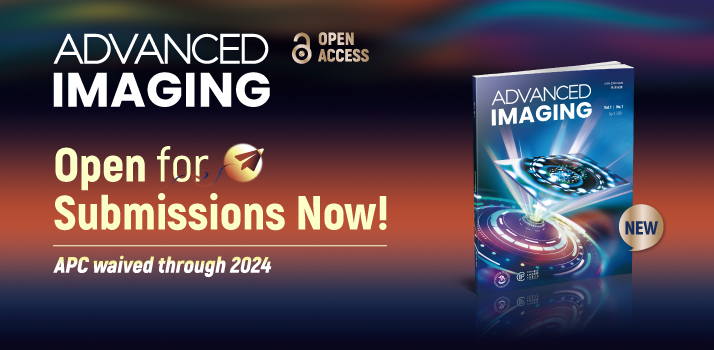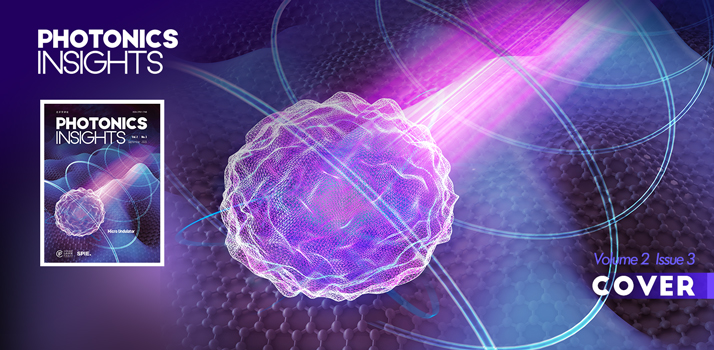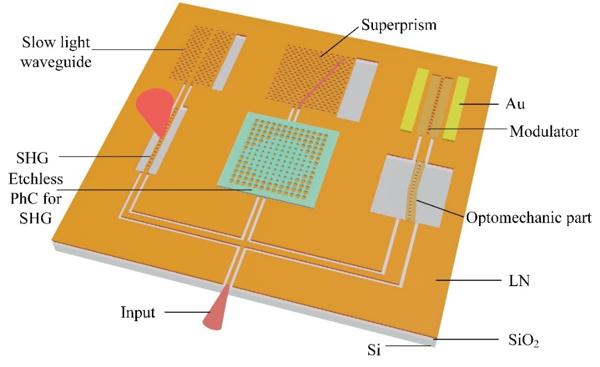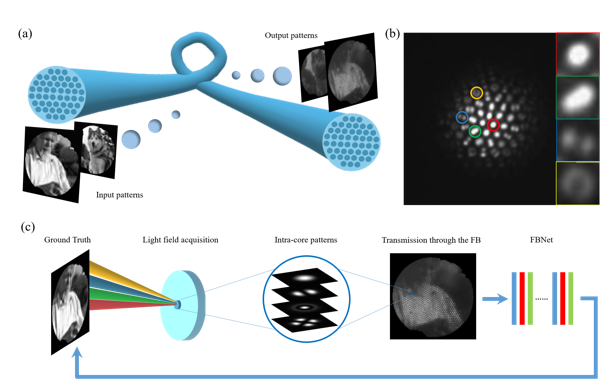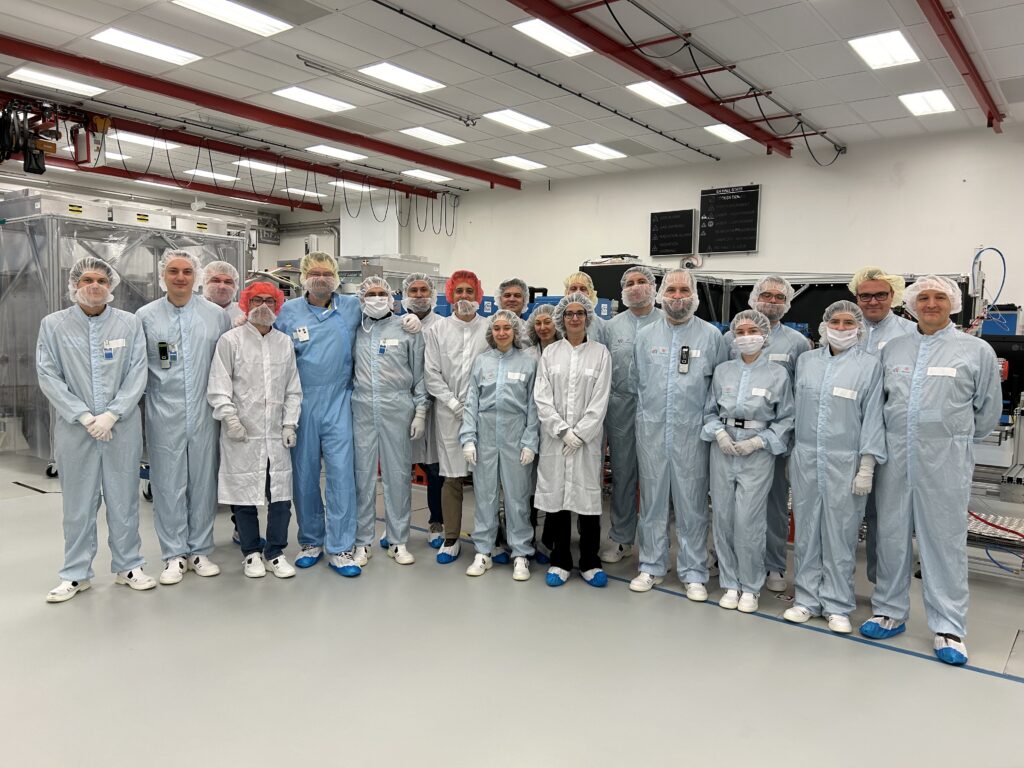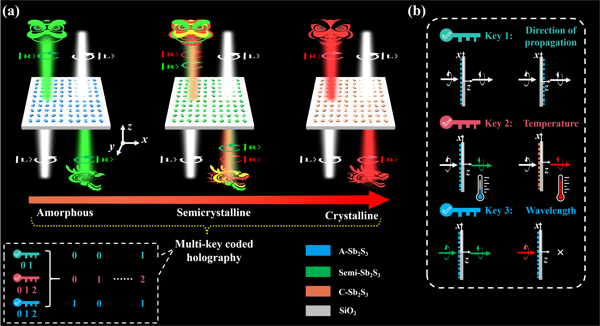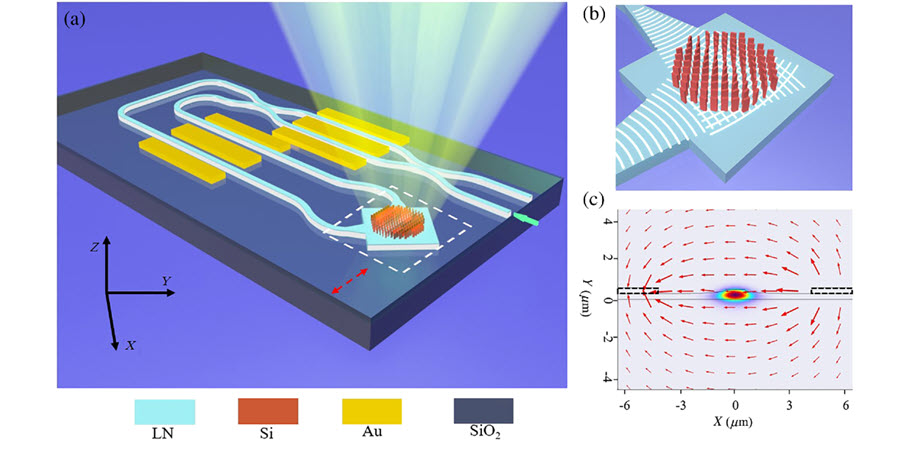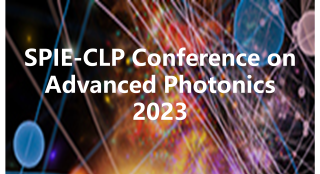- Apr. 29, 2024
- Vol. 22, Issue 3 (2024)
- Apr. 29, 2024
- Vol. 1, Issue 1 (2024)
- Apr. 28, 2024
- Vol. , Issue (2024)
- Apr. 28, 2024
- Vol. 12, Issue 2 (2024)
- Apr. 26, 2024
- Vol. 6, Issue 1 (2024)
Despite the significant advancements in perovskite light-emitting diodes (PeLEDs), achieving high-performance blue LEDs remains a key concern for future d
Despite the significant advancements in perovskite light-emitting diodes (PeLEDs), achieving high-performance blue LEDs remains a key concern for future display and optical communication applications, particularly pure-blue PeLEDs with high external quantum efficiency (EQE) and luminance. Recently, Hou and colleagues reported the utilization of an efficient additive that enables stable emission color with an enhanced EQE of 9.25% and a maximum luminance of 1806 cd cm-2, representing one of the best-performing pure-blue PeLEDs.show less
- May.02,2024
- Advanced Photonics,Vol. 6, Issue 2
- 020501 (2024)
Fluorescence lifetime imaging can reveal the high-resolution structure of various biophysical and chemical parameters in a microenvironment quantitatively
Fluorescence lifetime imaging can reveal the high-resolution structure of various biophysical and chemical parameters in a microenvironment quantitatively. However, the depth of imaging is generally limited to hundreds of micrometers due to aberration and light scattering in biological tissues. This paper introduces an iterative multi-photon adaptive compensation technique (IMPACT) into a two-photon fluorescence lifetime microscopy system to successfully overcome aberrations and multiple scattering problems in deep tissues. It shows that 400 correction modes can be achieved within 5 min, which was mainly limited by the frame rate of a spatial light modulator. This system was used for high-resolution imaging of mice brain tissue and live zebrafish, further verifying its superior performance in imaging quality and photon accumulation speed.show less
- May.02,2024
- Chinese Optics Letters,Vol. 22, Issue 4
- 041702 (2024)
Based on the wavelength transparency of the Butler matrix (BM) beamforming network, we demonstrate a multi-beam optical phased array (MOPA) with an emitti
Based on the wavelength transparency of the Butler matrix (BM) beamforming network, we demonstrate a multi-beam optical phased array (MOPA) with an emitting aperture composed of grating couplers at a 1.55 μm pitch for wavelength-assisted two-dimensional beam-steering. The device is capable of simultaneous multi-beam operation in a field of view (FOV) of 60°
- May.02,2024
- Photonics Research,Vol. 12, Issue 5
- 912 (2024)
We propose a joint look-up-table (LUT)-based nonlinear predistortion and digital resolution enhancement scheme to achieve high-speed and low-cost optical
We propose a joint look-up-table (LUT)-based nonlinear predistortion and digital resolution enhancement scheme to achieve high-speed and low-cost optical interconnects using low-resolution digital-to-analog converters (DACs). The LUT-based predistortion is employed to mitigate the pattern-dependent effect (PDE) of a semiconductor optical amplifier (SOA), while the digital resolution enhancer (DRE) is utilized to shape the quantization noise, lowering the requirement for the resolution of DAC. We experimentally demonstrate O-band intensity modulation and direct detection (IM/DD) transmission of 124-GBd 4 / 6-level pulse-amplitude modulation ( PAM ) -4 / 6 and 112-GBd PAM-8 signals over a 2-km standard single-mode fiber (SSMF) with 3 / 3.5 / 4-bit DACs. In the case of 40-km SSMF transmission with an SOA-based preamplifier, 124-GBd on-off-keying (OOK)/PAM-3/PAM-4 signals are successfully transmitted with 1.5 / 2 / 3-bit DACs. To the best of our knowledge, we have achieved the highest net data rates of 235.3-Gb / s PAM-4, 289.7-Gb / s PAM-6, and 294.7 Gb / s PAM-8 signals over 2-km SSMF, as well as 117.6-Gb / s OOK, 173.8-Gb / s PAM-3, and -231.8 Gb / s PAM-4 signals over 40-km SSMF, employing low-resolution DACs. The experimental results reveal that the joint LUT-based predistortion and DRE effectively mitigate the PDE and improve the signal-to-quantization noise ratio by shaping the noise. The proposed scheme can provide a powerful solution for low-cost IM/DD optical interconnects beyond 200 Gb / s.show less
- May.02,2024
- Advanced Photonics Nexus,Vol. 3, Issue 3
- 036007 (2024)
Piezocatalysis has emerged as a promising environmental remediation technique, and the exploration of environmentally friendly and high-performance piezocatalysts is crucial for their practical
Piezocatalysis has emerged as a promising environmental remediation technique, and the exploration of environmentally friendly and high-performance piezocatalysts is crucial for their practical applications. In this work, the bismuth sodium titanate (Na0.5Bi0.5TiO3 (NBT)) exhibited efficient piezocatalytic activity toward typical organic pollutants degradation, including acid orange 7, methylene blue, rhodamine B and methyl orange. Notably, rhodamine B was degraded by 98.1% within 30min with a reaction rate constant of 0.130min−1. Furthermore, the NBT achieved a hydrogen peroxide production efficiency of 538μmol/g⋅h without the sacrificial agent, indicating that the NBT is a superior piezocatalyst for dye degradation and hydrogen peroxide generation. This work demonstrated that by using mechanical energy, the NBT can be used for degrading organic pollutants in wastewater and hydrogen peroxide generation.show less
- May.02,2024
- Journal of Advanced Dielectrics
- (2024)
N-doped titanium dioxide (TiO2) hollow nanospheres with abundant oxygen vacancies were successfully synthesized by coupling urea treatment and annealing in an N2 atmosphere. The pristine TiO2 ho
N-doped titanium dioxide (TiO2) hollow nanospheres with abundant oxygen vacancies were successfully synthesized by coupling urea treatment and annealing in an N2 atmosphere. The pristine TiO2 hollow nanospheres exhibit a shallow donor level for electron trapping, while the urea treatment generates a N 2p acceptor level for hole trapping. After annealing in N2, the sufficient N atoms generate abundant oxygen vacancies for trapping electrons, resulting in further improved charge separation efficiency. The N-doped TiO2 exhibits the highest H2 evolution rate, reaching 2867μmolg−1h−1, which is six times higher than that of pristine TiO2 hollow nanospheres. The introduction of oxygen vacancies by interstitial N provides a promising way to improve the photocatalysis activity of photocatalysts.show less
- May.02,2024
- Journal of Advanced Dielectrics
- (2024)
Intrinsic SrTiO3 is a quantum paraelectric, but moderately Bi-doped SrTiO3 exhibits dielectric frequency dispersion similar to relaxor ferroelectrics. In this paper, detailed electron microscopi
Intrinsic SrTiO3 is a quantum paraelectric, but moderately Bi-doped SrTiO3 exhibits dielectric frequency dispersion similar to relaxor ferroelectrics. In this paper, detailed electron microscopic studies of the microstructures of Bi-doped SrTiO3 samples were presented. It was found that the Sr sites were replaced by off-central Bi, resulting in tensile strain in the strontium titanate (STO) lattice. In the Bi-doped SrTiO3 samples, the valence of titanium mainly showed the Ti4+ characteristic. According to the dielectric behavior and microstructure analysis, the polar nanoregions (PNRs) composed of strained SrTiO3 nanoclusters should be responsible for the ferroelectric relaxor behavior in samples with moderate Bi content.show less
- May.02,2024
- Journal of Advanced Dielectrics
- (2024)
The paper presents the results of a study of the microwave absorption properties of ceramic materials based on bismuth ferrite containing rare earth elements, as well as systems of solid solutio
The paper presents the results of a study of the microwave absorption properties of ceramic materials based on bismuth ferrite containing rare earth elements, as well as systems of solid solutions (1 − x)BiFeO3–xPbFe1/2Nb1/2O3 in a wide range of component concentrations. The methodology for measuring and calculating the parameters of samples of the materials under study is described. The influence of structural and microstructural factors on the average and maximum level of microwave absorption of the materials under study in a wide frequency range is analyzed. A comparison of the microwave absorbing properties of these materials with industrial absorbers has been carried out, and prospects for application in microwave technology have been shown.show less
- May.02,2024
- Journal of Advanced Dielectrics
- (2024)

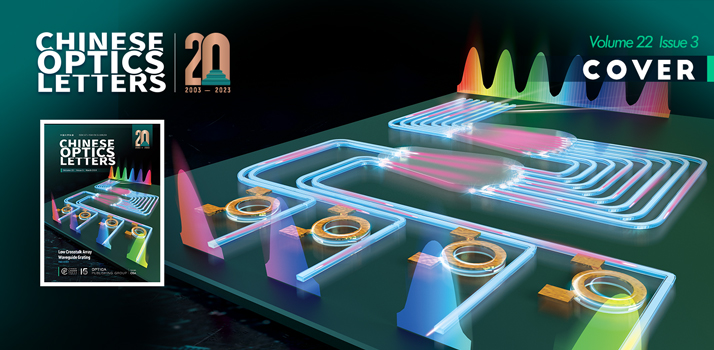
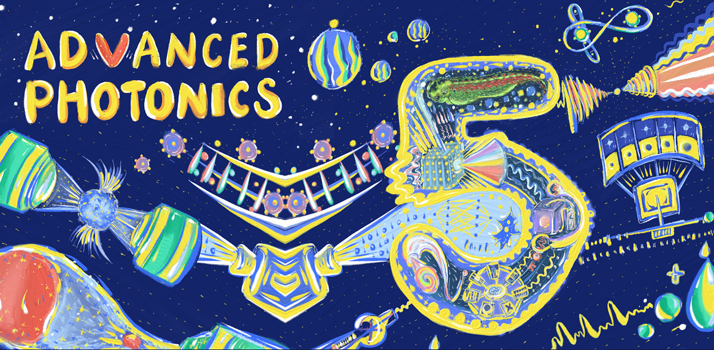
![On the Cover: Terahertz polarization sensing, chirality enhancement, and specific binding based on metasurface sensors for biochemical detection: a review [Invited]](/Post/images/2024/1/img_News_133491772873656281.jpg)
